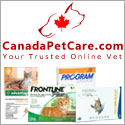Having an iguana as a pet is great but not as easy as you may think. It all starts with getting your baby iguana…
If there are baby birds , cats or ducks, then there are also baby iguanas. It is in the course of this stage that these iguanas appear their most fragile and need your loving concern the most. In spite of the fact that they appear like they are not difficult to take of in their small appearance, proper precaution safeguard is needed so that they will be healthier in their older years.
 Just like any young pet, there are certain standards that you need to supply for your baby iguana. Although they are not as meticulous , you should also consider if these things will be ideal for your iguana. You don’t want them to become sickly and eventually die even before you see them in their full sizes, now do you?
Just like any young pet, there are certain standards that you need to supply for your baby iguana. Although they are not as meticulous , you should also consider if these things will be ideal for your iguana. You don’t want them to become sickly and eventually die even before you see them in their full sizes, now do you?
Here are some of the essential factors you need to consider when taking care of your baby iguana.
1. Shelter.
Not just any type of cage for your iguana will do. Despite the fact that it does not matter what kind of material it is made of, you need to take into account what should be inside the cage that the iguana will need.
An example of this is having something in them that will keep your pet warm during the night. Look into carpeting or artificial turf to cover the flooring area of the cage. If you do not have the budget for it, you can go with newspapers because they work just as well.
Considering the fact that iguanas live on trees, you need to set up some branches for your pet to climb on to. Climbing on branches will form part of their entertainment and behaviors. Just make sure that the branches are steady enough to hold their weight in case they elect to lay down on them.
2. Temperature.
Baby iguanas should always be warm in order to remain healthy. Considering the fact that you have no way of telling this just by looking at them, you can place a thermometer inside their cage so you can monitor the changes in the temperature inside the habitat.
Make certain that you sustain a temperature of 70 degrees during the night and 85 degrees in the day. It is also a good idea for the cage for its shelter to be situated near a source of heat. You will see that your pet is prone to have a cozy rest if they stay within reach to that heat being radiated.
Special monitoring of temperature is required during the cold season. Investigate the shelter regularly. You will not want your pet to freeze to death without you being aware.
3. Food intake for your Iguana.
Youngster iguanas need to have a diet that is rich in Vitamin D3, phosphorous and calcium. Large quantity of greens are also needed. You could also give them vegetables and fruits that you yourself are consuming.
Baby iguanas are not used to being fed any kind of food from a human hand. Their current digestive system is not as robust and as flexible as cats or dogs. Know what kind of food they can take and what they are unable to.
Your baby iguana can grow up well balanced and strong just by taking care of them the way you do any kind of pet. If it is absolutely necessary, you can consult a vet that specializes in iguana for things that are far beyond your comprehension. They will be able to give you sound advice regarding your youngster iguana and the things that you need to do.



These peiecs really set a standard in the industry.